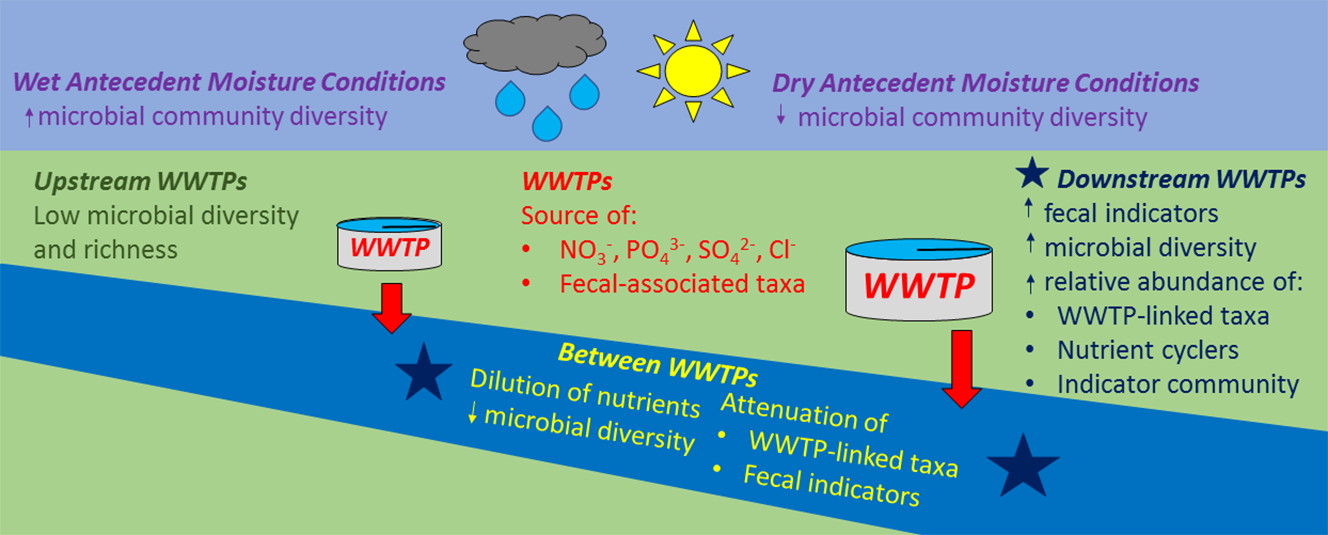Paper Published, Price et. al. 2017 in Science of the Total Environment
I’m very pleased to announce that our manuscript titled “Wastewater treatment plant effluent introduces recoverable shifts in microbial community composition in receiving streams” has been accepted for publication in Science of the Total Environment. This study is cross-disciplinary effort composed of individuals from Drexel University and Temple University. I would like to recognize and thank all of the coauthors.
PDFs (manuscript and supplemental material) and journal links can be found on my Publications page or through the journal. In my GitHub repository I have posted all of the raw data and scripts needed to replicate our data processing, statistical analysis, and figure generation for this manuscript.
Wastewater treatment plant effluent introduces recoverable shifts in microbial community composition in receiving streams
Jacob R. Price, Sarah H. Ledford, Michael O. Ryan, Laura Toran, Christopher M. Sales. 2017. Sci. Total Environ. doi:10.1016/j.scitotenv.2017.09.162

Abstract
Through a combined approach using analytical chemistry, real-time quantitative polymerase chain reaction (qPCR), and targeted amplicon sequencing, we studied the impact of wastewater treatment plant effluent sources at six sites on two sampling dates on the chemical and microbial population regimes within the Wissahickon Creek, and its tributary, Sandy Run, in Montgomery County, Pennsylvania, USA. These water bodies contribute flow to the Schuylkill River, one of the major drinking water sources for Philadelphia, Pennsylvania. Effluent was observed to be a significant source of nutrients, human and non-specific fecal associated taxa. There was an observed increase in the alpha diversity at locations immediately below effluent outflows, which contributed many taxa involved in wastewater treatment processes and nutrient cycling to the stream’s microbial community. Unexpectedly, modeling of microbial community shifts along the stream was not controlled by concentrations of measured nutrients. Furthermore, partial recovery, in the form of decreasing abundances of bacteria and nutrients associated with wastewater treatment plant processes, nutrient cycling bacteria, and taxa associated with fecal and sewage sources, was observed between effluent sources, which we hypothesize is controlled by distance from effluent source. Antecedent moisture conditions were observed to impact overall microbial community diversity, with higher diversity occurring after rainfall. Finally, the efficacy of using a subset of the microbial community including the orders of Bifidobacteriales, Bacteroidales, and Clostridiales to estimate the degree of influence due to sewage and fecal sources was explored and verified.
